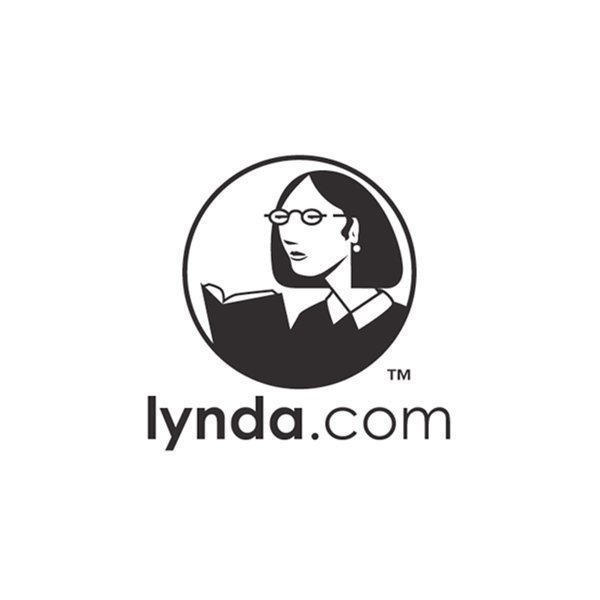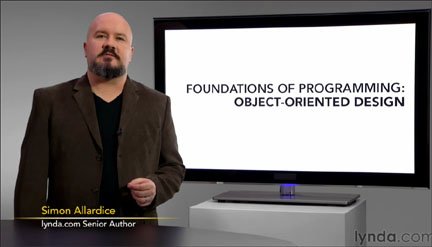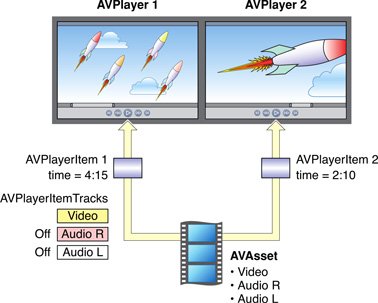電驢下載基地 >> 其他资源 >> 電腦基礎 >> 《面向對象設計編程基礎教程》(Lynda.com Foundations of Programming Object–Oriented Design)[光盤鏡像]
| 《面向對象設計編程基礎教程》(Lynda.com Foundations of Programming Object–Oriented Design)[光盤鏡像] | |
|---|---|
| 下載分級 | 其他资源 |
| 資源類別 | 電腦基礎 |
| 發布時間 | 2017/7/13 |
| 大 小 | - |
《面向對象設計編程基礎教程》(Lynda.com Foundations of Programming Object–Oriented Design)[光盤鏡像] 簡介: 中文名 : 面向對象設計編程基礎教程 英文名 : Lynda.com Foundations of Programming Object–Oriented Design 資源格式 : 光盤鏡像 主講人 : Simon Allardice 發行日期 : 2012年05月22日 地區 : 美國 對白語言 : 英語 文字語言 : 英文 簡介 : 語言:英語 網址:http:
電驢資源下載/磁力鏈接資源下載:
- 下載位址: [www.ed2k.online][面向對象設計編程基礎教程].TLF-SOFT-Lynda.com.Foundations.of.Programming.Object-Oriented.Design-iNKiSO.iso
- 下載位址: [www.ed2k.online][面向對象設計編程基礎教程].TLF-SOFT-Lynda.com.Foundations.of.Programming.Object-Oriented.Design-iNKiSO.nfo
全選
"《面向對象設計編程基礎教程》(Lynda.com Foundations of Programming Object–Oriented Design)[光盤鏡像]"介紹
中文名: 面向對象設計編程基礎教程
英文名: Lynda.com Foundations of Programming Object–Oriented Design
資源格式: 光盤鏡像
主講人: Simon Allardice
發行日期: 2012年05月22日
地區: 美國
對白語言: 英語
文字語言: 英文
簡介:

語言:英語
網址:http://www.lynda.com/Java-tutorials/Foundations-Programming-Object-Oriented-Design/96949-2.html
類別:教程
Lynda.com 出品的時長3小時01分鐘的面向對象設計編程基礎教程。Simon Allardice向您介紹面向對象設計編程基礎,如Java和C# ,紅寶石,和Python ,是面向對象的語言,這有助於一個復雜和連貫的應用程序代碼組,包括你的設計模式,類和序列圖,統一建模語言(UML )工具方案創建概念模型,然後演示如何轉換成代碼圖表。
Topics include:
Why use object-oriented design (OOD)?
Pinpointing use cases, actors, and scenarios
Identifying class responsibilities and relationships
Creating class diagrams
Using abstract classes
Working with inheritance
Creating advanced UML diagrams
Understanding object-oriented design principles


=======================================
下載鏈接來自TLF
未經過安裝測試與安全檢測,使用者後果自負與本論壇無關
軟體版權歸原作者及其公司所有,如果你喜歡,請購買正版
=======================================
目錄:
Introduction
11m 35s
Welcome
1m 25s
Who this course is for
1m 15s
What to expect from this course
3m 6s
Exploring object-oriented analysis, design, and development
1m 41s
Reviewing software development methodologies
4m 8s
1. Core Concepts
26m 14s
Why we use object-orientation
2m 42s
What is an object?
5m 22s
What is a class?
4m 43s
What is abstraction?
2m 45s
What is encapsulation?
3m 45s
What is inheritance?
3m 35s
What is polymorphism?
3m 22s
2. Object-Oriented Analysis and Design
12m 16s
Understanding the object-oriented analysis and design processes
4m 13s
Defining requirements
6m 9s
Introduction to the Unified Modeling Language (UML)
1m 54s
3. Utilizing Use Cases
23m 35s
Understanding use cases
6m 11s
Identifying the actors
4m 16s
Identifying the scenarios
5m 7s
Diagramming use cases
4m 18s
Employing user stories
3m 43s
4. Domain Modeling (Modeling the App)
16m 36s
Creating a conceptual model
1m 59s
Identifying the classes
2m 27s
Identifying class relationships
2m 38s
Identifying class responsibilities
6m 43s
Using CRC cards
2m 49s
5. Creating Classes
22m 25s
Creating class diagrams
6m 11s
Converting class diagrams to code
4m 57s
Exploring object lifetime
5m 55s
Using static or shared members
5m 22s
6. Inheritance and Composition
19m 49s
Identifying inheritance situations
6m 49s
Using inheritance
2m 43s
Using abstract classes
2m 2s
Using interfaces
4m 20s
Using aggregation and composition
3m 55s
7. Advanced Concepts
9m 23s
Creating sequence diagrams
5m 18s
Working with advanced UML diagrams
2m 3s
Using UML tools
2m 2s
8. Object-Oriented Design Patterns
10m 39s
Introduction to design patterns
2m 40s
Example: the singleton pattern
4m 53s
Example: the memento pattern
3m 6s
9. Object-Oriented Design Principles
21m 47s
Introduction to object-oriented design principles
2m 50s
Exploring general development principles
3m 55s
Introduction to SOLID principles
6m 43s
Introduction to GRASP principles
8m 19s
Conclusion
7m 1s
Reviewing feature support across different object-oriented languages
3m 50s
Additional resources
2m 27s
Goodbye
44s
代碼
英文名: Lynda.com Foundations of Programming Object–Oriented Design
資源格式: 光盤鏡像
主講人: Simon Allardice
發行日期: 2012年05月22日
地區: 美國
對白語言: 英語
文字語言: 英文
簡介:

語言:英語
網址:http://www.lynda.com/Java-tutorials/Foundations-Programming-Object-Oriented-Design/96949-2.html
類別:教程
Lynda.com 出品的時長3小時01分鐘的面向對象設計編程基礎教程。Simon Allardice向您介紹面向對象設計編程基礎,如Java和C# ,紅寶石,和Python ,是面向對象的語言,這有助於一個復雜和連貫的應用程序代碼組,包括你的設計模式,類和序列圖,統一建模語言(UML )工具方案創建概念模型,然後演示如何轉換成代碼圖表。
Topics include:
Why use object-oriented design (OOD)?
Pinpointing use cases, actors, and scenarios
Identifying class responsibilities and relationships
Creating class diagrams
Using abstract classes
Working with inheritance
Creating advanced UML diagrams
Understanding object-oriented design principles


=======================================
下載鏈接來自TLF
未經過安裝測試與安全檢測,使用者後果自負與本論壇無關
軟體版權歸原作者及其公司所有,如果你喜歡,請購買正版
=======================================
目錄:
Introduction
11m 35s
Welcome
1m 25s
Who this course is for
1m 15s
What to expect from this course
3m 6s
Exploring object-oriented analysis, design, and development
1m 41s
Reviewing software development methodologies
4m 8s
1. Core Concepts
26m 14s
Why we use object-orientation
2m 42s
What is an object?
5m 22s
What is a class?
4m 43s
What is abstraction?
2m 45s
What is encapsulation?
3m 45s
What is inheritance?
3m 35s
What is polymorphism?
3m 22s
2. Object-Oriented Analysis and Design
12m 16s
Understanding the object-oriented analysis and design processes
4m 13s
Defining requirements
6m 9s
Introduction to the Unified Modeling Language (UML)
1m 54s
3. Utilizing Use Cases
23m 35s
Understanding use cases
6m 11s
Identifying the actors
4m 16s
Identifying the scenarios
5m 7s
Diagramming use cases
4m 18s
Employing user stories
3m 43s
4. Domain Modeling (Modeling the App)
16m 36s
Creating a conceptual model
1m 59s
Identifying the classes
2m 27s
Identifying class relationships
2m 38s
Identifying class responsibilities
6m 43s
Using CRC cards
2m 49s
5. Creating Classes
22m 25s
Creating class diagrams
6m 11s
Converting class diagrams to code
4m 57s
Exploring object lifetime
5m 55s
Using static or shared members
5m 22s
6. Inheritance and Composition
19m 49s
Identifying inheritance situations
6m 49s
Using inheritance
2m 43s
Using abstract classes
2m 2s
Using interfaces
4m 20s
Using aggregation and composition
3m 55s
7. Advanced Concepts
9m 23s
Creating sequence diagrams
5m 18s
Working with advanced UML diagrams
2m 3s
Using UML tools
2m 2s
8. Object-Oriented Design Patterns
10m 39s
Introduction to design patterns
2m 40s
Example: the singleton pattern
4m 53s
Example: the memento pattern
3m 6s
9. Object-Oriented Design Principles
21m 47s
Introduction to object-oriented design principles
2m 50s
Exploring general development principles
3m 55s
Introduction to SOLID principles
6m 43s
Introduction to GRASP principles
8m 19s
Conclusion
7m 1s
Reviewing feature support across different object-oriented languages
3m 50s
Additional resources
2m 27s
Goodbye
44s
代碼
.do–"""""'–o.. *
.o"" "".. ***
,,'' ``b. *
d' ``b
d`d: `b. ***
,,dP `Y. ***
d`88 `8. **
8`88' `8 **
Y:d8P 8, **
P,88b ,`8 **
::d888, ,8:8. **
dY88888 `' :: **
8:8888 `b *** *
Pd88P',... ,d888o.8 ***
:88'dd888888o. d8888`88:
,:Y:d8888888888b ,d88888:88:
:::b88d888888888b. ,d888888bY8b ***** * **
b:P8;888888888888. ,88888888888P ****** ** **** *
8:b88888888888888: 888888888888' ** * * ** ****
8:8.8888888888888: Y8888888888P * * * ** * *
YP88d8888888888P' ""888888"Y * * ** *
:bY8888P"""""'' : ** ** ** *
8'8888' d ** ** ** *
:bY888, ,P ** ** ** *
Y,8888 d. ,– ,8' ** ** ** *
`8)888: ' ,P' ** ** ** *
`88888. ,... ,P * ** ***
`Y8888, ,888888o ,P * ***
Y888b ,88888888 ,P' **** **
`888b ,888888888 ,,' * *****
`Y88b dPY888888OP :' * **
:88.,'. `'` p *
)8P, ,b ' . **
:p d,'d`b, ,8
. dP' d8': ,
'8P" d8P' 8 – p *****
d,' ,d8' '' : ******
iNK H0RN Presents .. d' 8P' d' '; ** * * **
,: `' d p. * * * **** *
,dooood88: , ,d `` `b. * * ****
.o8"'""""""Y8.b 8 `"'' .o' ` """ob. ** ** * **
dP' `8: K dP'' "`Yo. ** ** *
dP 88 8b. ,d' ``b ** *****
8. 8P 8""' `" :. ** ** ***
:8: :8' ,: :: ** ** ***
:8: d: d' :: * ** ***
:8: dP ,,' :: * ***
`8: :b dP ,, :: **** ***
,8b :8 dP ,, d * ***** *** *
:8P :8dP d' d 8 * *** ***
:8: d8P d' d88 :P *
d8' ,88' ,P ,d888 d' **
88 dP' ,P d8888b 8
,8: ,dP' 8. d8''88' :8
:8 d8P' d88b d"' 88 :8
d: ,d8P' ,8P""". 88 :P
8 ,88P' d' 88 :8
,8 d8P 8 Rls Date : 24/05/12 88 :8
d: 8P ,: Type : Bookware :88 :8
8',8:,d d' Supplier : iNK H0RN :8: :8
,8,8P'8' ,8 Disks : 1 DVD 8' :8
:8`' d' d' Archive : i–lynfopood 8 p:
`8 ,P :8 # Files : 23 x 50 MB :8: p:
8, ` d8. :8: 8:
:8 d88: d8: 8
`8, d8888 88b 8
88 ,d::888 888 Y:
YK,oo8P :888 888. `b
`8888P :888: ,888: Y,
``'" `888b :888: `b
8888 888: ::
8888: 888b Y.
8888b :888 `b
88888. `888, Y
dPdPdPdPdPdPdPdPdPdPdPdPdPdPdPdPdPdPdPdPdPdPdPdPdPdPdPdPdPdPdPdPdPdPdPdPd
: Lynda.com – Foundations of Programming: Object–Oriented Design
PdPdPdPdPdPdPdPdPdPdPdPdPdPdPdPdPdPdPdPdPdPdPdPdPdPdPdPdPdPdPdPdPdPdPdPdP
: DESCRIPTION
Most modern programming languages, such as Java, C#, Ruby, and Python, are object–oriented languages, which help group individual bits of code into a complex and coherent application. However, object–orientation itself is not a language; itÆs simply a set of ideas and concepts.
Let Simon Allardice introduce you to the termsùwords like abstraction, inheritance, polymorphism, subclassùand guide you through defining your requirements and identifying use cases for your program. The course also covers creating conceptual models of your program with design patterns, class and sequence diagrams, and unified modeling language (UML) tools, and then shows how to convert the diagrams into code.
Topics include:
òWhy use object–oriented design (OOD)?
òPinpointing use cases, actors, and scenarios
òIdentifying class responsibilities and relationships
òCreating class diagrams
òUsing abstract classes
òWorking with inheritance
òCreating advanced UML diagrams
òUnderstanding object–oriented design principles
http://www.lynda.com/Java–tutorials/Foundations–Programming–Object–Oriented–Design/96949–2.html
PdPdPdPdPdPdPdPdPdPdPdPdPdPdPdPdPdPdPdPdPdPdPdPdPdPdPdPdPdPdPdPdPdPdPdPdP
Interested in joining iNK ? We're currently looking to expand.
: Suppliers – Cisco / Microsoft Training
: Suppliers – Online Subscriptions – TestOut/Nuggets/PrepLogic etc..
: Suppliers – MCT Access MOC/Technet
: Suppliers – Often Buy Training/Subscriptions for yourself ?
Or if you feel you can contribute in other ways, please contact..
–––––> Email – [email protected]
dPdPdPdPdPdPdPdPdPdPdPdPdPdPdPdPdPdPdPdPdPdPdPdPdPdPdPdPdPdPdPdPdPdPdPdPd
8 8
8 8
8 : INSTALLATION 8
8 8
8 a. Extract 8
8 b. Mount/Burn 8
8 c. Play & Learn 8
8 8
8 8
PdPdPdPdPdPdPdPdPdPdPdPdPdPdPdPdPdPdPdPdPdPdPdPdPdPdPdPdPdPdPdPdPdPdPdPdP
: RESPECT DUE
DDUiSO .. JGTiSO .. AG .. CFE .. LiBiSO
- 上一頁:《AutoCAD要點2繪圖基礎教程》(Lynda.com AutoCAD Essentials 2 Drawing Fundamentals)[光盤鏡像]
- 下一頁:《Creo 2.0 基礎入門高清視頻教程》[壓縮包]
相關資源:
- [電腦基礎]《掌握LAB色度空間》(Lynda.com Photoshop CS3 Mastering Lab Color)[ISO]
- [電腦基礎]《Logic Pro視頻教程》(ASK Video Tutorial DVD - Logic Pro Tutorial Level 1-3)Mac 版[ISO]
- [電腦基礎]《Adobe Captivate 4基礎教程》(Lynda.com Adobe Captivate 4 Essential Training)[光盤鏡像]
- [電腦基礎]《C++編程金典 第3版 》(C++ How To Program,Third edition )第3版
- [其他資源綜合]《現代武術散打速成》掃描版[PDF] 資料下載
- [電腦基礎]《華為全文檢索資料光盤》T1-081830-20050223-C-1.7a[ISO]
- [生活百科]《黑暗角落的幽靈-女巫》(Enchantress)神秘文化典藏系列[PDF] 資料下載
- [其他資源綜合]《總統》更新第20集/KBS水木劇/鳳凰天使/韓語中字[RMVB]資料下載
- [其他資源綜合]《游身八卦連環掌》掃描版[PDF] 資料下載
- [其他資源綜合]《武術初學指南》掃描版[PDF] 資料下載
- [操作系統]《CentOS 5.5 》32bitCentOS5.5[光盤鏡像]
- [應用軟件]《軟件大集合》第六版,應用軟件、資源下載
- [文學圖書]《葛蕾西·艾倫殺人事件》(The Gracie Allen Murder Case)(范·達因)英文文字版[PDF]
- [人文社科]《圖騰與禁忌》(Totem and Taboo)(Sigmund Freud 弗洛伊德)英文文字版[PDF]
- [生活圖書]《小學生最愛玩的380個思維游戲》掃描版[PDF]
- [多媒體類]《視頻轉換軟件》(handbrake for veket)0.98[安裝包]
- [生活圖書]《頭腦訓練120題:觀察、思維、推理、判斷》掃
- [應用軟件]《生命周期管理》(Computer.Associates.Unicenter.Desktop.And.Server.Management)2006-10-12[Bin]
- [計算機與網絡]《Delphi源代碼分析》掃描版[PDF]
- [人文社科]《草莽文化》掃描版[PDF]
- 《Visual Basic.NET二次開發AutoCAD范例》[ISO]
- 《Houdini高清中文視頻教程——Houdini9.5入門精講》(Houdini9.5 Video teaching)高清視頻教程 6.03更新 [WMV]
- 《iWork 08 教程》(VTC Apple iWork 08 Tutorials)
- 《JSP動態網站開發基礎練習+典型案例(光盤)》[ISO]
- 《3D.Palace權威Max9.0教程》(3D.Palace.Crux.For.3DS.Max.Disk.I)[ISO]
- 《Adobe After Effects 6.5 進階教程》(VTC.ADOBE.AFTER.EFFECTS.6.5.ADVANCED.TUTORIALS)[Bin]
- 《經典LINUX書籍匯總之一》全部是清晰的PDF格式
- 《Lynda.com - Premiere Pro CS4 基礎教程》(Lynda.com - Premiere Pro CS4 Essential Training)
- 《SolidWorks視頻教程》(SolidWorks Video Tutorial 4th edition)第四版[光盤鏡像]
- 《巧學Access 2010視頻教程》(Lynda.com Access 2010 Tutorials Power Shortcuts)[光盤鏡像]
- 《DigitalTutors mentalray 節點使用參考》(DigitalTutors mental ray Nodes Online Reference Library)[光盤鏡像]
- 《Lynda.com iTunes 7 New Features CD 教程》[Bin]
免責聲明:本網站內容收集於互聯網,本站不承擔任何由於內容的合法性及健康性所引起的爭議和法律責任。如果侵犯了你的權益,請通知我們,我們會及時刪除相關內容,謝謝合作! 聯系信箱:[email protected]
Copyright © 電驢下載基地 All Rights Reserved



